Language
- Deutsch
- English
- Español
- Français
- Italiano
- Nederlands
- Português
Currency
- AUD Australian Dollar
- CAD Canadian Dollar
- EUR Euro
- GBP Pound Sterling
- SGD Singapore Dollar
- USD US Dollar
- ZAR Rand

Botswana is known for its diverse, alluring landscapes and wealth of wildlife. From the winding waterways of the famous Okavango Delta to the friendly meerkats of the Kalahari, a Botswana safari is fast becoming one of the most sought-after travel destinations in Africa.
Travellers visit the Delta to experience the world's biggest inland wetland that is completely surrounded by a desert that's laced with millions of high-quality diamonds. Prince Harry wooed Meghan Markle here and Elizabeth Taylor chose Botswana for one of her weddings. People flock to nearby Chobe National Park to enjoy one of the highest concentrations of wild elephants anywhere in Africa.
Desert, delta, rivers and baobabs; unusual species like lechwe and sitatunga; sensational birding of big ticks like Pel's fishing owl; an annual zebra migration and exquisite accommodation – Botswana really does have it all. Let's swoop down into this incredible place and equip you with all the Botswana safari tips you need to know.
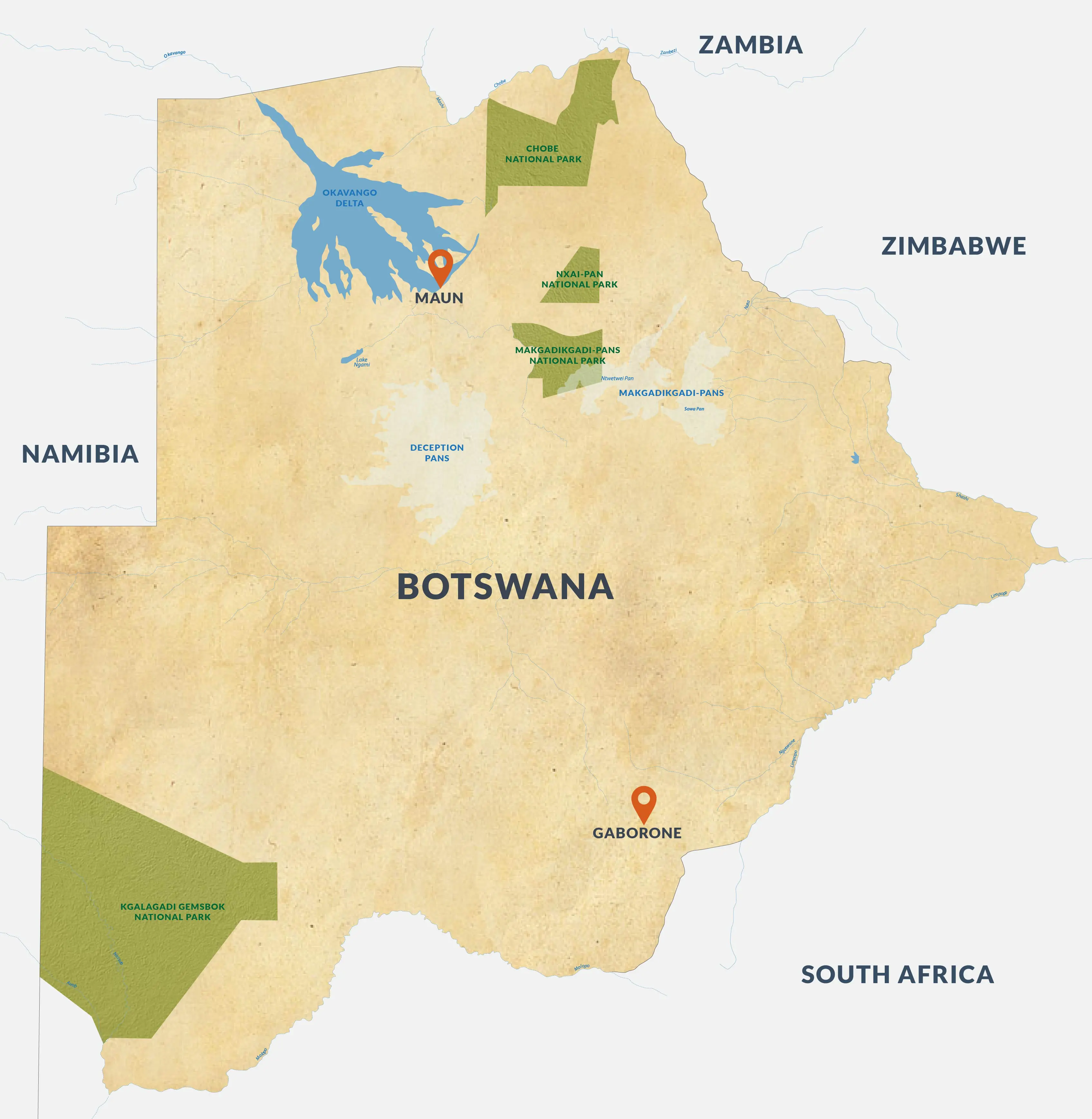
Botswana is a landlocked country in the southern part of Africa. Its direct neighbours – clockwise from the north – are Zambia, Zimbabwe, South Africa and Namibia. The capital is Gaborone but virtually no safari travellers ever go there: entry is mostly through the small, low-key town of Maun or the border post at Kasane (pronounced ‘kas-sar-nee').
Botswana is about the size of France but is home to fewer than 2.3 million people because most of the country is desert or semi-desert. Large tracts are given over to diamond mining and others to conservation. With so few people, life slows down, traffic is mellow, and you can have a truly relaxing holiday.
Starting in the north, you find Chobe National Park, most famous for huge herds of elephants that take advantage of the deep, wide Chobe River. This is perhaps Botswana's busiest reserve as it is close to Kasane and has the most accommodation. Chobe is also famous for Nile crocodiles that weigh up to a ton, territorial pods of hippos and vast swathes of buffalo – up to 500 at a time is not uncommon. Chobe is also where the Savuti Channel and Linyanti Marshlands are found. They may dry up completely in times of drought but most years these flow with thirst-quenching water, attracting plentiful game.
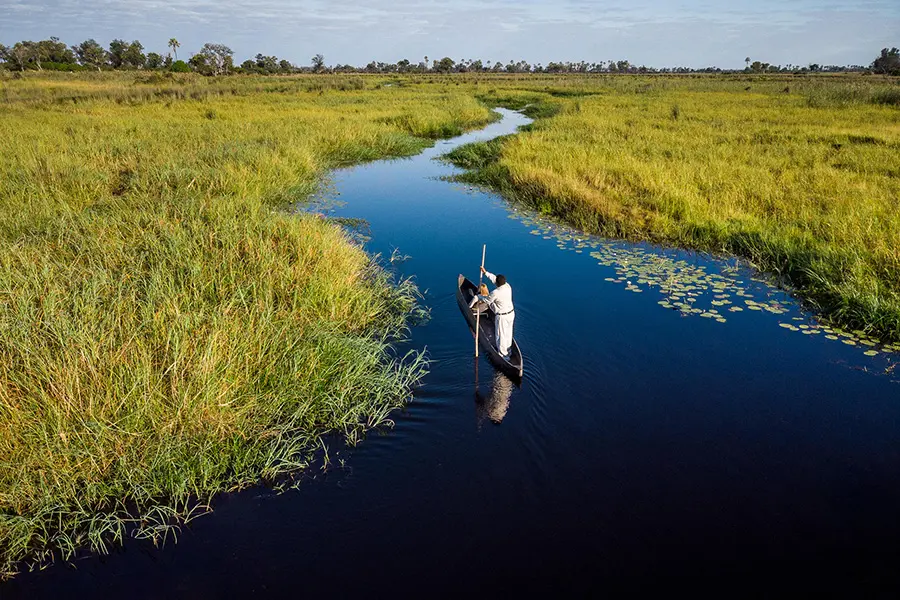
Going south from Chobe, you hit Moremi Game Reserve, a woodland wonderland that is one of the best places in Africa to see leopard. Adjacent and south of Moremi is the Okavango Delta, the glinting, shimmering, glistening jewel in Botswana's wildlife crown.
Chobe offers a mixed landscape of golden savannah, riverine forest and woodland while Moremi has less savannah but more forest and woodland. By the time you get to the Okavango Delta, you're in a land of floodplains, waterways lined with reeds, termite mounds and ilala palms. There's virtually nowhere else in Africa quite like it.
Those are the most popular areas in Botswana, especially for first-timers, whether it's your first time in Botswana, in Africa or even on safari. More experienced and seasoned travellers feel confident to venture off the beaten track and even further south, to the Central Kalahari Game Reserve.
The Kalahari is a massive area that dwarfs Chobe, Moremi and the Delta combined but with a fraction of the visitors. You'll find desert-adapted creatures like oryx, pangolin, bat-eared foxes and jackals thriving in an area that is 180 degrees different to the Delta. This is a big-sky country and the clear bright blue of day is replaced by a dazzling dome of stars by night.
Just up from the Kalahari and slightly to the east are the smaller and more accessible semi-desert areas of Nxai Pan National Park and the lunar-esque Makgadikgadi Pans. This area is famous for three major things: an outcrop of colossal trees known as Baines Baobabs, fantastic quad biking and, best of all, the annual zebra migration around the Boteti River.
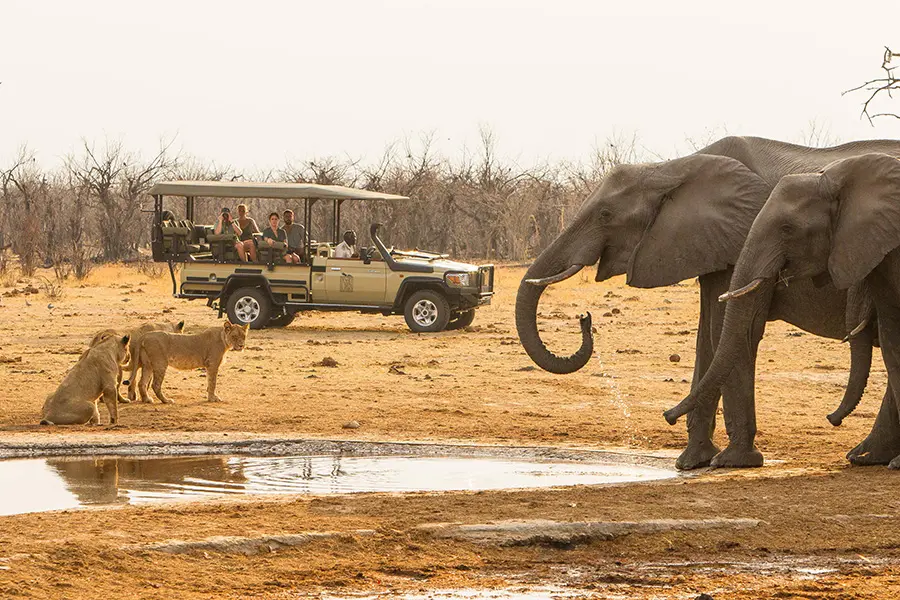
It's best to note upfront that Botswana safari costs associated with a trip here, means that this probably won't be your cheapest vacation, ever. The government has deliberately decided on a low-visitor-volume, high-accommodation-rates model. This means that fewer travellers pay more but get an exceptional experience largely free of crowds, coaches, queues, and giant hotels.
By law, accommodation in the Delta must be constructed only of timber, thatch and other eco-friendly materials – no bricks, concrete or mortar are allowed so that construction can be completely reversed if necessary. That means that lodge owners here have found other ways to impart luxury, from beaten copper bathtubs on outside decks to top-notch Swarovski binoculars to use during your stay.
That's not to say that you can't have a cost-effective Botswana safari that suits your budget. With clever planning, sufficient time, choosing your season carefully and deciding what's important to you – perhaps a shorter time on safari staying at more upscale camps, compromising on a hot-air balloon ride or even spending more time on safari but staying at more basic lodges – our African Safari Experts can easily craft an itinerary that suits your budget. Don't think that you can never afford it – rather enquire and see what we can secure for you.
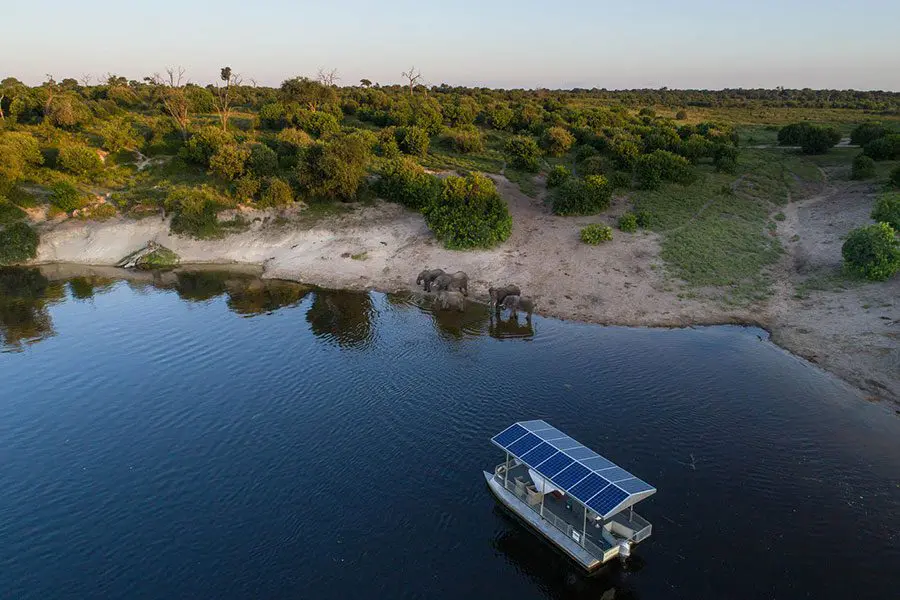
If you need to save rather than splurge, then keep the following in mind:
Of course, a luxury Botswana safari is a major, once-in-a-lifetime, bucket-list trip, so try to have as big a budget as possible. It's silly to take a long-haul flight and then have to compromise radically on what you can see and do – especially in a destination as magical as this!
Here is our rough guideline for a per-person-per-night budget for Botswana safari costs. Low season runs from about November to May and high season from about June to October.
| 4-star comfort | 4-star luxury | 5-star luxury | |||
|---|---|---|---|---|---|
| Low | High | Low | High | Low | High |
| $650 | $900 | $900 | $1,350 – $1,500 | $1,600 | $2,000 – $3,000 |
Botswana is not known for huge hotels – the biggest are found in Chobe because this is a popular stop-off for overlanders and other travellers. Once you go south to Moremi, the Delta and the desert areas, you're in a world where lodges can be as small as four immaculate suites, catering for just eight lucky guests at a time. Government limits on construction materials keep lodges intimate and many blend into the environment, especially when the summer rains bring lush vegetation.
There are so many incredible options to choose from that we've broken them down by region:
Most accommodation is outside the national park. If you choose a lodge inside, you don't have to queue at the gate and have a head start on your morning game drive. You can also move away from the day-tripping crowds more easily, as they tend to start and end at the same point.
Wedged between Chobe the Delta, Linyanti and Savuti have the best of both worlds: plenty of water to attract wildlife but also classic bush terrain that lends itself to extremely satisfying game drives.
If you want to see lions, leopards, cheetahs and wild dogs, then this is the place to be. Reportedly the best-protected conservation area in Botswana, Moremi consistently delivers fantastic game viewing.
Synonymous with water safaris via mokoro and power boat, the Delta delivers birds, dragonflies and aquatic species in abundance. It's hard to believe you're surrounded by a sun-baked desert when you find yourself in this verdurous paradise on an Okavango safari.
It's worth spending at least two nights out in the desert because it is such an intense contrast to the water world of the Delta and will give you a better appreciation of how astonishing the Okavango – a massive wetland in the middle of ‘nowhere' – really is. ‘Tau' means ‘lion', which is why so many camps here have ‘tau' in their names. Its pronunciation has echoes of a lion's roar in it.
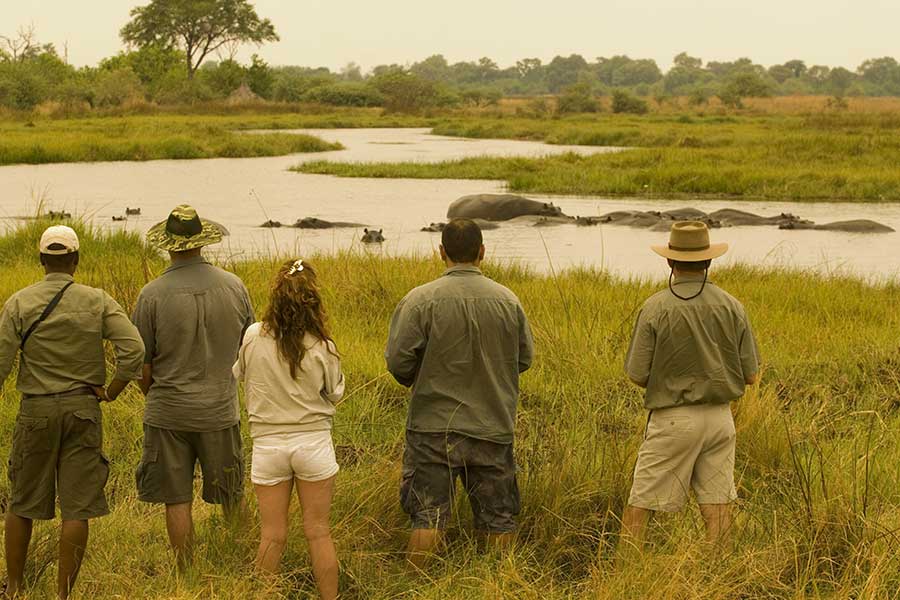
Game viewing in Botswana is as diverse as the country's multiple landscapes – and equally compelling. Although this is certainly big game country, it is not true Big 5 country in the same way that the Kruger National Park in South Africa or the Ngorongoro Crater in Tanzania are. There, it's not uncommon to see elephant, rhino, lion, leopard and buffalo on the same day – sometimes on the same game drive, if your luck is in. Botswana doesn't make it that easy for you and rhino can be tricky to find although a huge conservation project has translocated over a hundred of them from poaching hotspots in South Africa to safety in Bots.
For sheer variety, however, Botswana is very hard to beat:
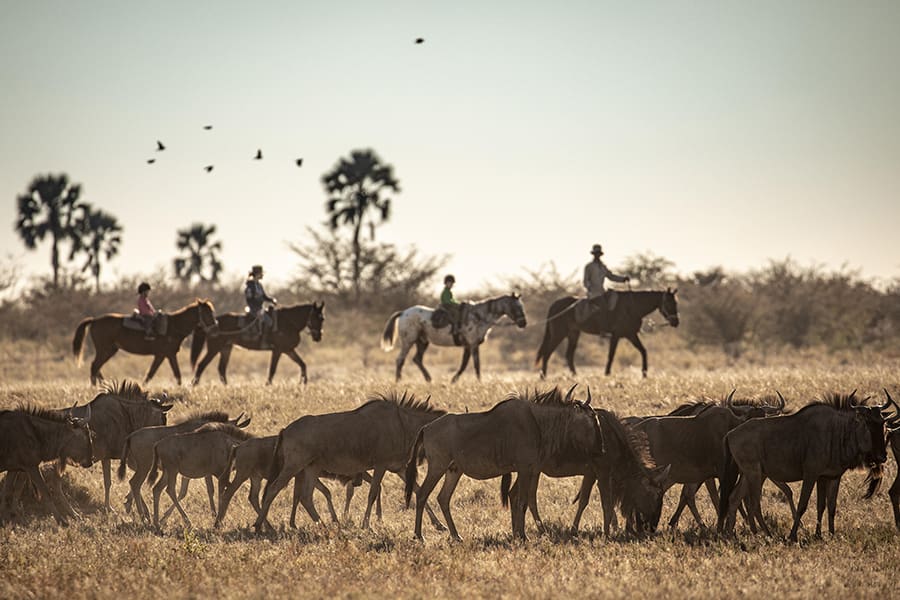
The general rule of thumb is: peak safari season is during Africa's dry, cool winter (about May to September, although, paradoxically, October is often the hottest month the year in Botswana. Africa is like that).
The lack of rain during high or peak season means the vegetation dies down and sources of water dry up. While this is not good news for the wildlife, it makes your guide's life a lot easier because the animals are much easier to find and see. In their bid for survival, they don't wander far from the remaining sources of water, which your guide will know. It can be a heart-stopping time in many ways: not only do you get clear views of the game but predators take advantage of prey weakened by lack of grazing. A formidable buffalo that was well nourished during the summer Green or low season might suddenly be a viable option for a pride of lions. Predators stake out waterholes, waiting to strike.
The Botswana summer is hot and wet: from October, both temperature and rain gauges have a steep upward trajectory. It takes rain to in Angola over summer to slowly trickle down the Okavango River and flood the Okavango Delta. This is why, once again paradoxically, the Delta is at its best in winter. Some camps can't offer any water activities – like mokoro trips or sunset cruises – in summer because the water levels are too low.
| HIGH/PEAK SEASON | LOW/GREEN SEASON | ||||
|---|---|---|---|---|---|
| AVERAGE TEMPERATURE | 6°C / 43°F – 27°C / 81°F | 18°C / 65°F – 38°C / 100°F | |||
| RAIN | No | Yes (October – November and March to April) | |||
| WATER SAFARIS | Yes | No |
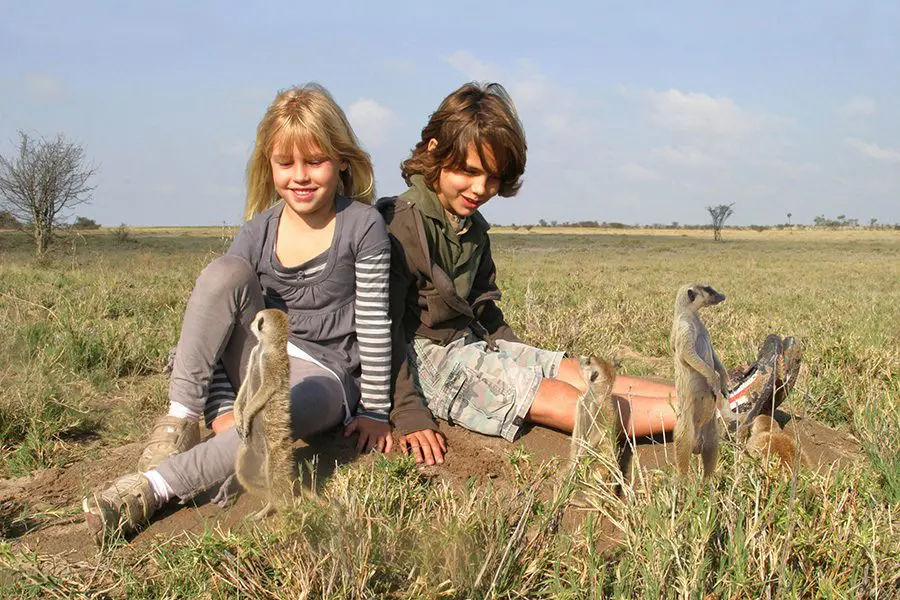
Botswana is suitable for most types of safari travellers, even first-timers to Africa, because:
Because it is such a highly desirable part of the world, consider the following:
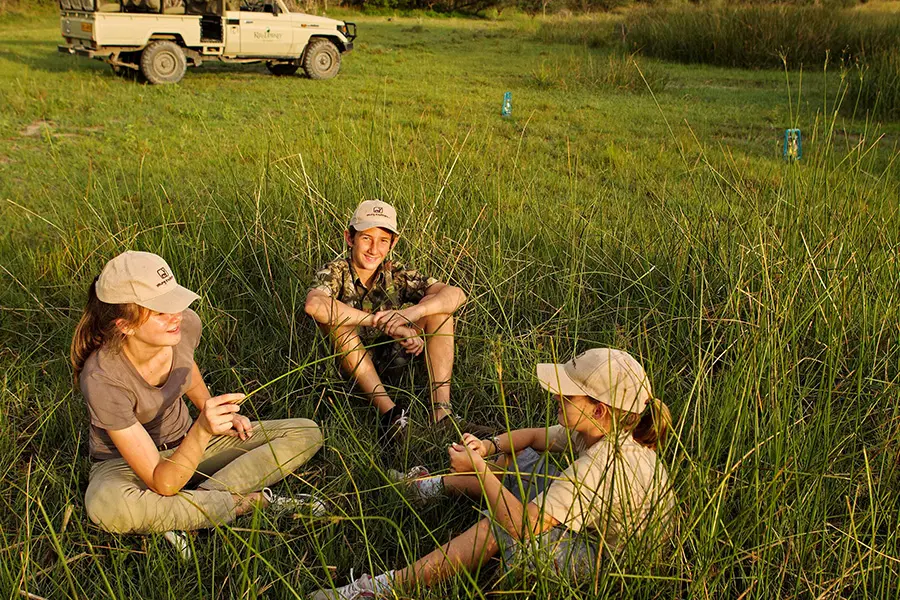
Botswana has an outstanding travel industry with very good safety records. Since 1998, we've safely and successfully helped thousands of people explore the country. We've also travelled the length and breadth of it ourselves, so here are our best health and safety tips:
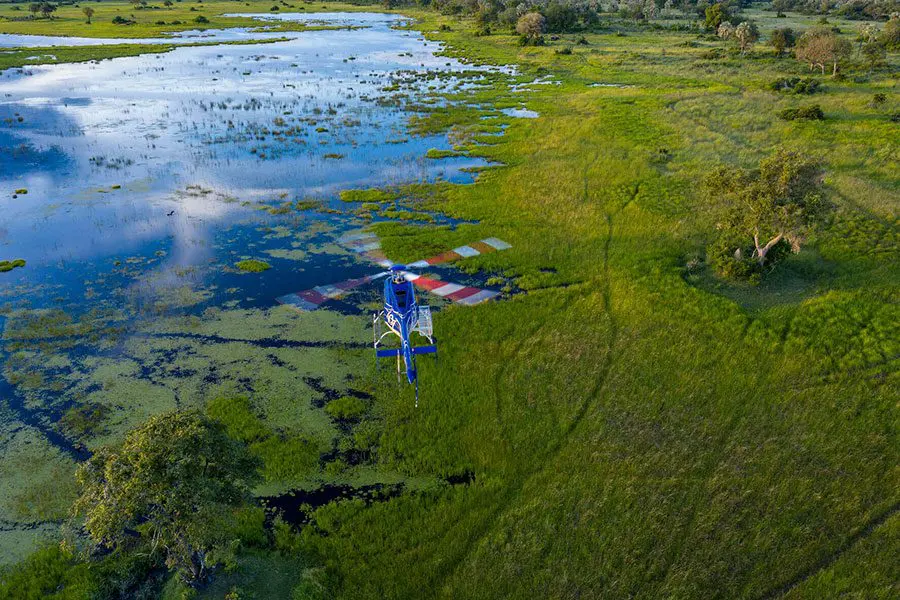
| Cape Town, South Africa | There is a direct flight from Maun to Cape Town | ||
| Johannesburg, South Africa | There are direct flights from Maun and Kasane to Johannesburg. From there you can fly directly to other major destinations in Africa as Joburg is the hub | ||
| Victoria Falls, Zimbabwe | From Kasane, it is possible to drive to the Zimbabwean side of the Falls. Once you're there, you can drive to Livingstone, on the Zambian side |
Although it is bordered by Namibia, Zambia and Zimbabwe, Botswana is not easy to get to. Almost all international visitors enter via Cape Town or Johannesburg in South Africa, and return to Johannesburg to get elsewhere. Botswana doesn't really have massive airports because of the ‘low-volume, high-cost' government policy so be prepared for modest buildings and low-key arrivals.
Your Safari Expert will plan your journey carefully to make the most of the few existing air links. Go2Africa has a specialist air team who are experts in creating journeys that are feasible, as cost-effective as possible and logistically seamless.
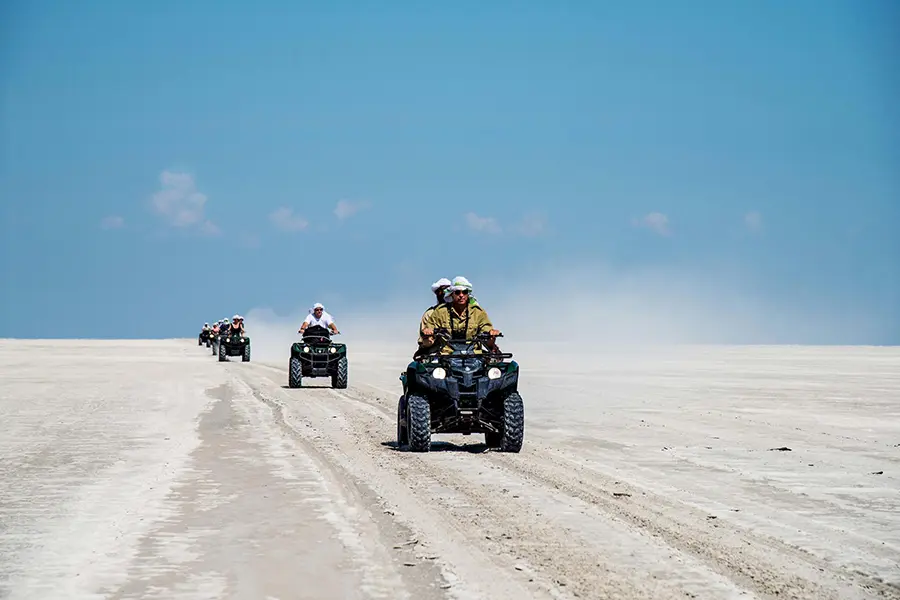
For us, no two journeys to Botswana are ever the same. We create every tailor-made itinerary from scratch to perfectly match our clients' budgets, schedules, interests and needs. Over the decades, we've pinpointed some popular options that you can use as a springboard to your own Botswana safari:
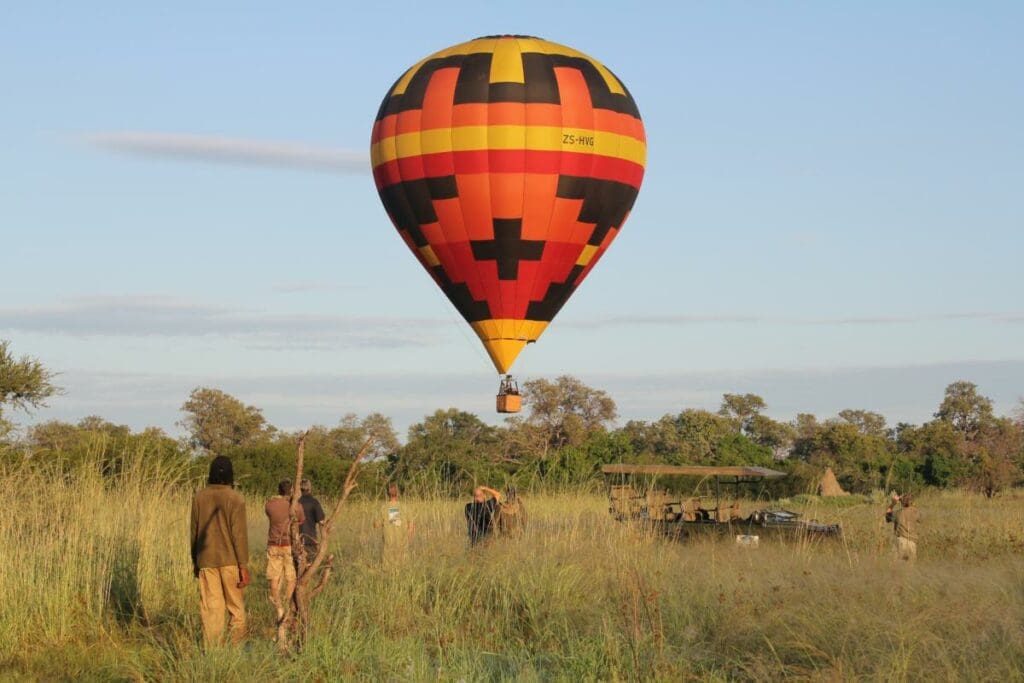
The chief attraction in Botswana is, of course, top-notch safari. Simply going on morning and afternoon game drives (and night drives if you're lucky enough to be staying in a private concession) will give you hours of entertainment and pleasure. If you want to ramp up your time on vacation, then these are some of our favourite ideas:
There are only two camps that offer this activity so if it's on your bucket list, be sure to stay at Vumbura Plains or Mapula Lodge. It's also highly seasonal, making planning it as part of your trip even more important (the flights are only between April and September, when there's virtually no rain). The reward is floating above the world's largest inland wetland, marvelling at the sparkling water, twinkling streams and groups of leaping lechwe below you…
Also known as ‘sky-beds', these are raised platforms built so that you sleep in or above the tree line. This gives you a 360-degree view of the night sky above, nocturnal animals below and – best of all – the rising sun the next morning. If you're on honeymoon, this is a must-do. There is a private bathroom, complete security and meals taken truly out in Africa.
Leave the 4×4 at camp and head out on an ATV. The flat pans make for smooth rides, giving you a sense of freedom as you hit the ‘open road' of Makgadikgadi or Nxai. When you stop, be awed by how silent the pans are, a rarity in a modern world of almost constant noise and look for desert dwellers on the horizon.
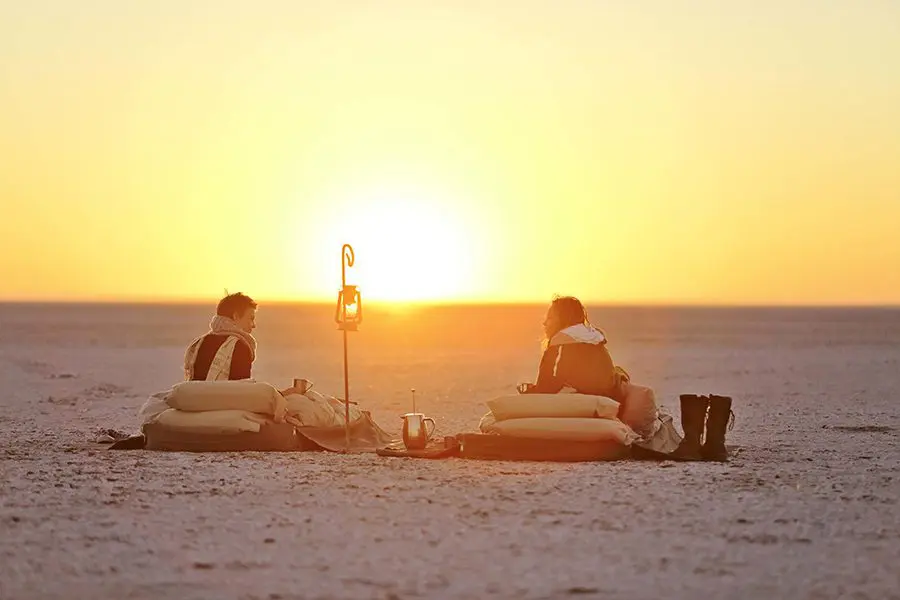
If you're an experienced rider, a horse safari is one of the most sensational ways to experience Botswana. Your senses will be heightened, your closeness to nature reinforced and the camaraderie between mounts and riders unbeatable as you approach herds of zebra, tsessebe, giraffe and other gentle grazers.
Riding elephants has been phased out but walking with these friendly, intelligent and emotional pachyderms is a highlight few forget. Rescued and rehabilitated ellies have been habituated to our presence and allow you to move with them – one of Botswana's most inspiring experiences that reinforces the importance of conservation.
The Selinda Spillway is part of the Okavango Delta that's ideal for paddling. Less overgrown with dense reeds, this seasonal waterway lends itself to drifting silently along, spotting elephants, zebra, giraffe, baboons and monitors as they come down to drink.
If you need even more inspiration, here are 20 other amazing things to experience in Botswana.
With over 25 years of first-hand knowledge and experience, our African Safari Experts are perfectly positioned to provide you with in-depth recommendations to ensure you have your dream Botswana safari. Get in touch to start crafting your tailor-made holiday: